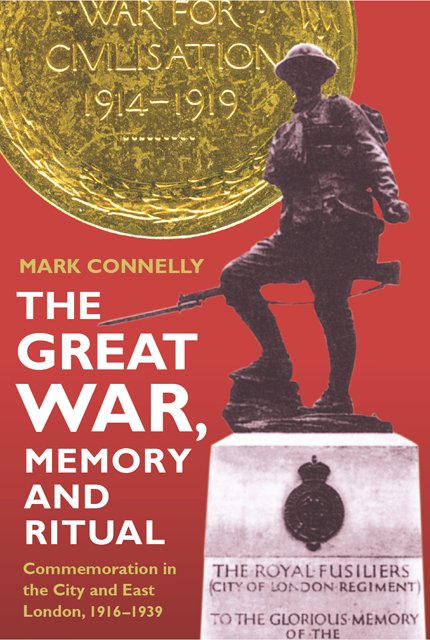7 - The Years Rich in Imagery, 1922-1929
Published online by Cambridge University Press: 22 March 2023
Summary
The years between 1922 and 1929 saw Armistice Day come to full maturity. The elements laid down between 1919 and 1921 were expanded upon and as the war memorial process tailed off towards the mid-twenties the day became the major focal point of remembrance. Deep reverence and a high level of public interest were the touchstones throughout these years as Armistice Day took on an aspect of seriousness and reflection by confining itself to the values enshrined in the war memorials. The annual act of remembrance was therefore also a catharsis as it provided a comforting reminder of exactly why men had fought and died.
The values of Armistice and the establishment of ‘Armistice Sunday'
Sacrifice, duty and patriotism were the concepts reiterated each 11 November. The Prudential Bulletin reminded all its workers of the glory of sacrifice and devotion to duty:
when we cease from our work at the historic eleventh hour and meditate upon its significance, our thoughts will lead us back through the avenue of years and recall to us those who proved by their sacrifice to what heights of loyalty, devotion, and greatness of service the sons of men may rise.
The amazing thing about Armistice Day in the years from 1922 to 1929 was its consistency; the atmosphere of the occasion was remarkably solid and reassuring. When Ben Thomas vividly recalls the Armistice observations of his youth, the clarity of his recollection is surely - in part - due to the sheer repetition of certain images:
I was in the main road at the time of the two minutes silence, at eleven o'clock. All the traffic came to a standstill, and most of it was horse traffic at that time. People on the pavement all stood still, and as you can guess, the trams and buses also came to a standstill. People stood at their street doors or leaned out of their windows, and some factories let their employees stand at the factory gates. The war memorials in parishes and villages had a good con- gregation around them, and many beautiful wreaths laid around them. The war memorial in Limehouse Church park used to get a big congregation around it on November 11th, and many beautiful wreaths were laid at its foot.
If anything the day became increasingly respectable and reverential.
- Type
- Chapter
- Information
- The Great War, Memory and RitualCommemoration in the City and East London, 1916-1939, pp. 150 - 176Publisher: Boydell & BrewerPrint publication year: 2001

